Going zero waste is a huge step, mostly because all daily routines get their own set of new challenges when we try to reduce waste to almost nothing. Creating a zero waste bathroom can be tricky at first. I feel that taking the path to zero waste means reducing waste, naturally, but also chemicals, cosmetic products, personal care byproducts, and so on.
When it comes to bathing and beauty routines, you cannot have a zero waste bathroom without considering reducing the water consumption as well. The hard part is when you realize how much waste we produce and how much water we waste on a daily basis in a single room in the house.
The good news is that once you get going, you will find that there are many zero waste solutions available. Since I cannot talk for someone else, I can only share with you my personal experiences and experiments.
Here is How I Achieved and Manage a Zero Waste Bathroom and an Awesome Green Life
Zero Waste Beauty: Tips, Tricks, and Recipes
Vegan Shampoo & Conditioner

I buy my zero waste shampoo and conditioner in bulk and bring reusable bottles to fill them up any time I need to renew my stock. I also sometimes use refillable vegan shampoo or a vegan shampoo and conditioner set I buy online.
Zero Waste Makeup
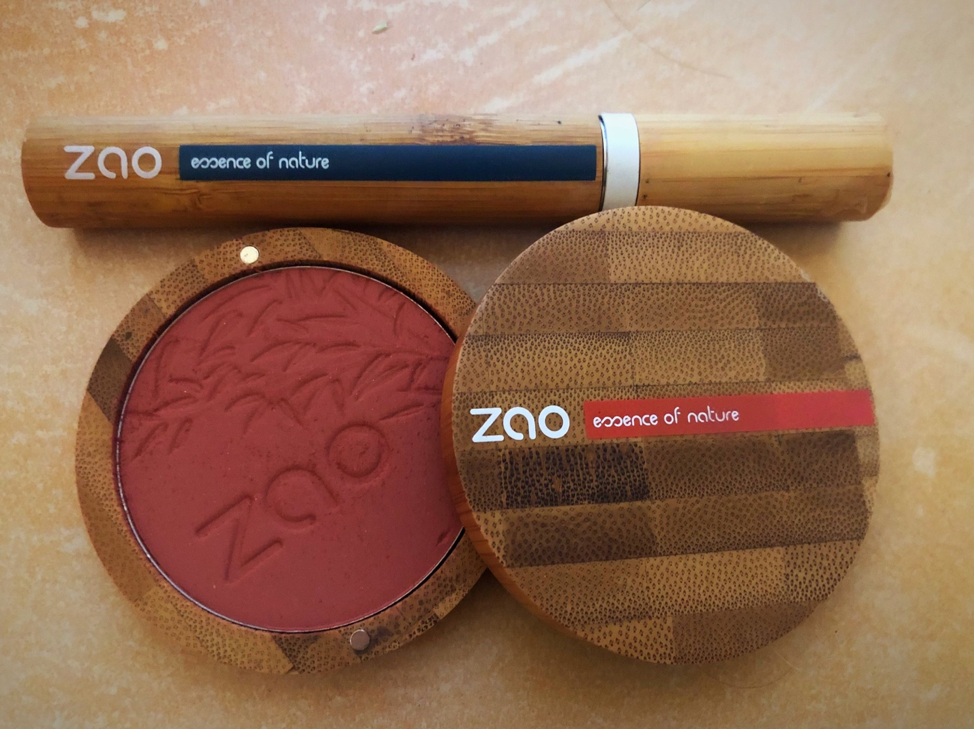
Makeup is one of the easiest things to change, and it makes the biggest difference! Of course, one option is to stop wearing makeup, but for me, it is too extreme. Think about all the plastic that is in your makeup bag right now. Imagine all the trash you have created over the years. Try concocting your own makeup at home, following one or more of these ideas:
If making your own zero waste makeup is too much hassle, then the good news is that there are actually zero waste makeup brands. I like Zao’s line of organic and sustainable cosmetics.
Organic Makeup Remover
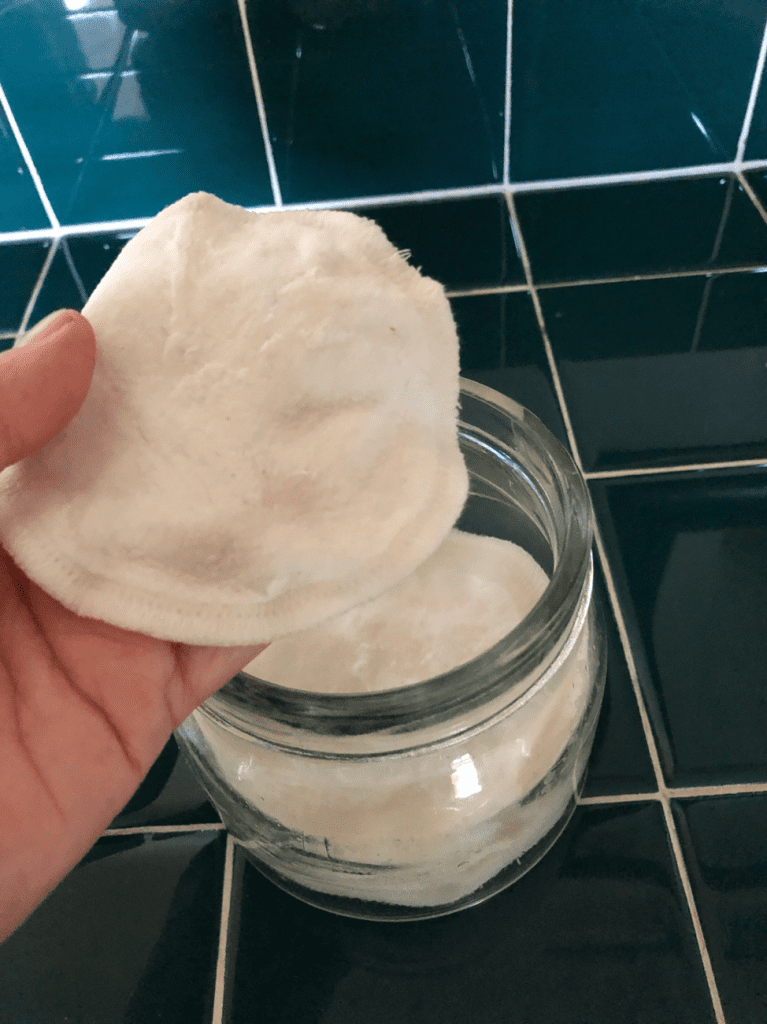
Forget old fashioned makeup remover in plastic bottles and unsustainable wipes! Instead, say hello to a super easy DIY organic makeup remover!
First, you can try the old trick of using a washcloth with water and some bulk soap. If that does not work, you can use homemade makeup removing pads. I use this recipe from CoconutMama:
Ingredients:
- One 5-ounce glass jar;
- A few small cloth wipes (I use cloth pieces I cut from an old t-shirt);
- 1 ½ – 2 tablespoons of Fractionated Coconut Oil (which you can also use as a carrier for aromatherapy and definitely enjoy it for a massage);
- 1 teaspoon of castile soap (ethically made and biodegradable);
- Distilled water (just make sure you buy it in a glass bottle or jug, otherwise, the plastic container will contribute to plastic pollution and ruin the concept of a zero waste bathroom);
- 2-4 drops of any essential oils of your choice. I personally enjoy lavender, as it is a great essential oil to use on your skin. Nevertheless, you can use your favorite flavor any time you wish, especially if you get a full set of ethical and organic essential oils.
Instructions:
- Place the cotton pads in the glass jar.
- In a small bowl, mix the fractionated coconut oil and castile soap together.
- Pour the mixture over the cotton pads.
- Press down on the pads so the soap and coconut oil evenly absorb into them.
- Pour some distilled water over pads, just enough to wet them.
- Place the lid on the jar and shake (this helps to evenly distribute the liquid over the pads).
Organic Moisturizer
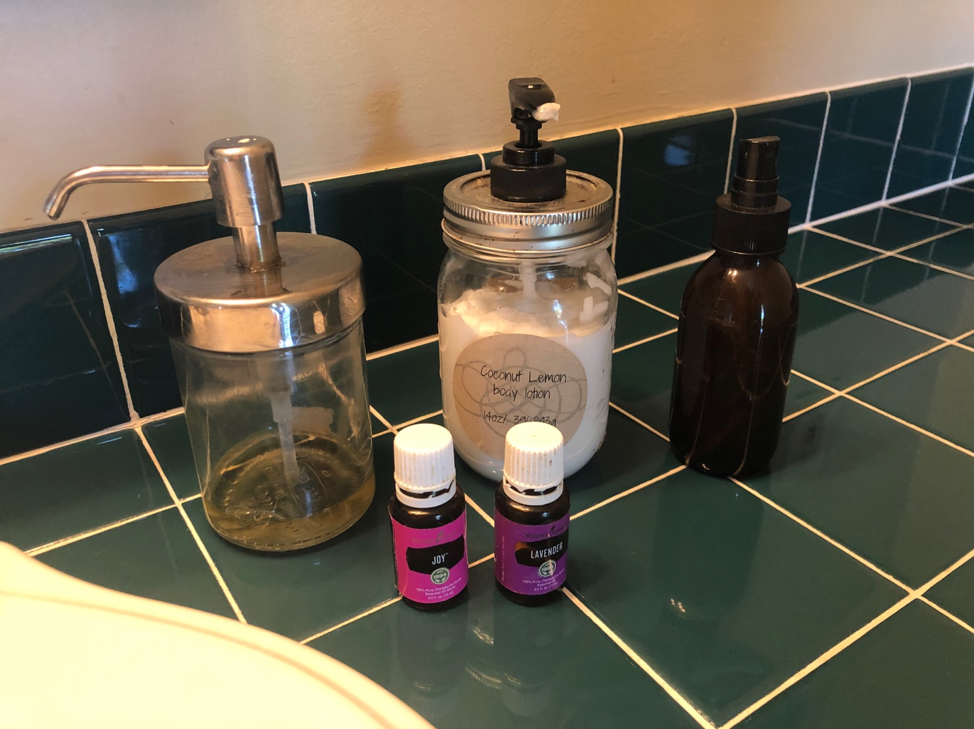
Coconut oil is a wonderful, light, natural moisturizer. I also buy organic body lotion in a refillable bottle in bulk at my local Coop. If you do not have a store to buy coconut oil in bulk from, go online to find raw organic coconut oil. Just make sure that any type of packaged coconut oil you buy from any store comes in a glass recipient, otherwise, you defy the purpose of a zero waste bathroom and green life.
Reef Safe Sunscreen
The discussion regarding the fashion industry’s environmental impact was just scratching the surface. The beauty and cosmetic industry have their fair share of controversy and problems when it comes to microplastics in the oceans, chemicals endangering marine life together with our own freshwater drinking sources.
While this particular topic demands and deserves a separate article, I will briefly discuss sunscreen. In our times, we take sunscreen for granted, focused on its benefits for our health, concerned with its capabilities of protecting us against UV rays.
What many people do not even consider, however, is that sunscreen contains a handful of chemicals that wash up in our seas and oceans. According to a recent National Geographic report, the estimates are frightening:
- It seems that 14,000 tons of sunscreen end up washing away into the seas and oceans every year;
- 82,000 chemicals from beauty, makeup, and self-care products are polluting the seas;
- Coral reefs are under incredible stress. The world has already lost almost 80% of corals in the Caribbean in the past 50 years, and let’s not even begin to discuss the damage we caused to the Great Barrier Reef in Australia. The cause? Ocean pollution, coastal development, and increasingly warming waters.
When you look at the numbers, you can easily understand that a product as healthy, common, and mundane as sunscreen can damage the ecosystem to an unprecedented extent.
One solution is reef-safe sunscreen that does not contain oxybenzone or nano-size particles.
Truth be told, it took us forever to find a good zero waste sunscreen brand that is also chemical-free, reef safe and easy to rub in but finally, we found one from Raw Element.
In case you are interested in other brands, I strongly recommend you check your products against the HEL LIST offered by Haereticus Environmental Laboratory. They put many cosmetic products through an analytical‐forensic test to check if they contain any of the chemicals that are known dangers to oceans, corals, and plant/animal marine life.
Zero Waste Hair Accessories
Biodegradable Hair Ties
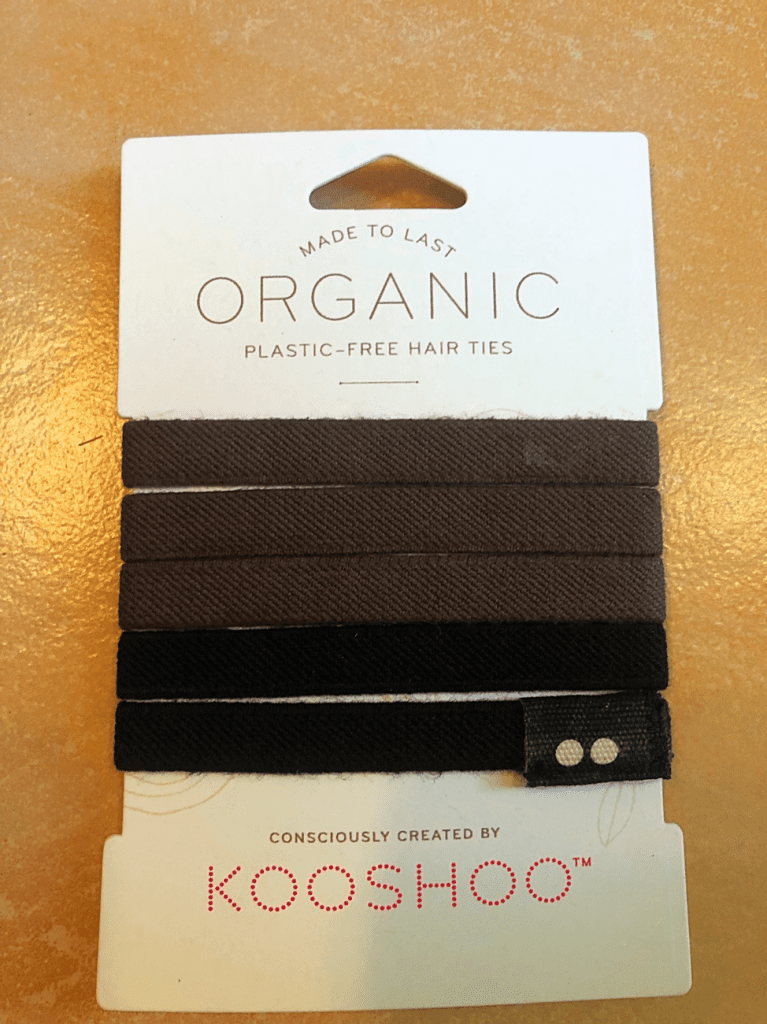
Have you ever noticed how many dropped or discarded hair ties you find on the beach and on the ground? Unfortunately, most hair ties contain plastic to some degrees, so they will not decompose and, therefore, add to the global plastic pollution.
I use ethically made plastic-free hair ties instead, which are sold in 100% recycled materials and/or in biodegradable packaging.
Bamboo Brush and Comb
When it comes to hair care, I use a natural bamboo brush and comb set. Bamboo is one of the most sustainable crops out there and I am glad more and more people are using bamboo products these days.
Zero Waste Cleaning and Zero Waste Hygiene
Organic Toilet Paper
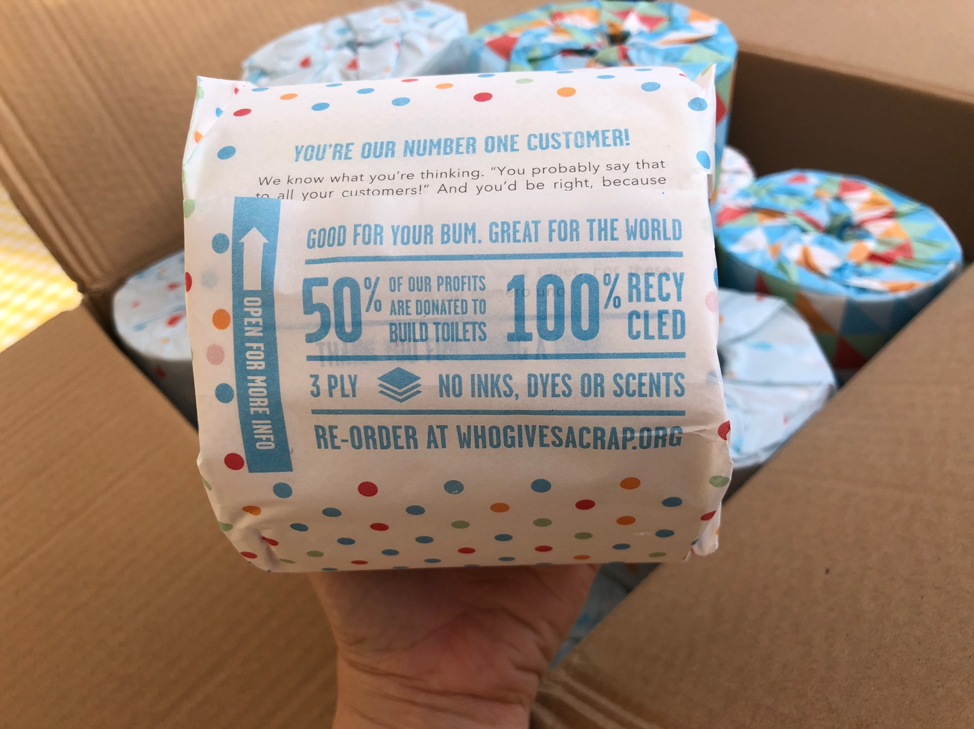
Did you know that it takes 37 gallons of water just to make one roll of toilet paper? Now, if that alone is not a good reason for going the extra mile to find better options, then consider the fact that about 27,000 trees are cut down daily, most of them from virgin forests, to make toilet paper.
That being said, we buy our toilet paper from “Who gives a crap,” because it is nature-friendly and uses only 100% recycled paper fibers, bamboo or sugarcane to save water, carbon emissions, and trees.
If you do not find this particular brand, I also recommend Smitten zero waste toilet paper, as it is also tree-free, organic, biodegradable, compostable, unbleached, unscented, and making an important contribution to your zero waste bathroom.
Bamboo Toothbrush and Compostable Floss
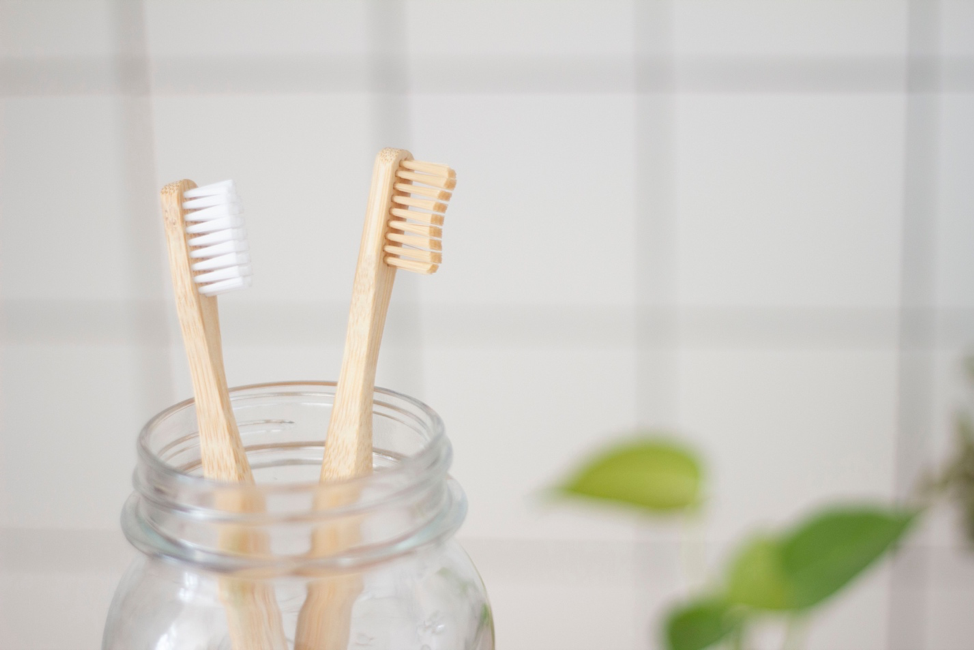
Forget everything you know about plastic toothbrushes and regular floss. Even better, forget they even exist.
At home, we use bamboo toothbrushes that are compostable, together with compostable floss.
- For zero waste toothpaste you can make your own, but my family did not like the taste of homemade paste, so, instead, we use chewable toothpaste tablets.
- Some of the best zero waste dental floss products come in silk, ethical refillable packaging, and excellent mint flavors.
Alternative Tampons and Pads
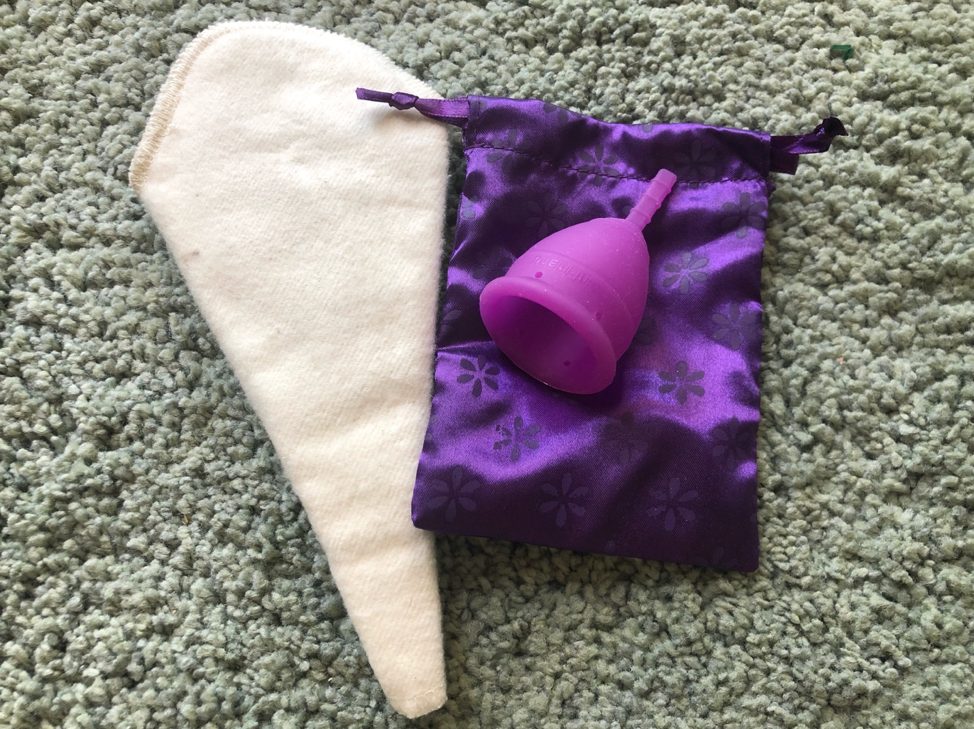
Regular tampons contain lots of chemicals that might prove harmful for your health and are not biodegradable. It means that they will most likely pollute the environment forever. I, for one, use reusable diva cups and cloth panty liners.
Hand soap
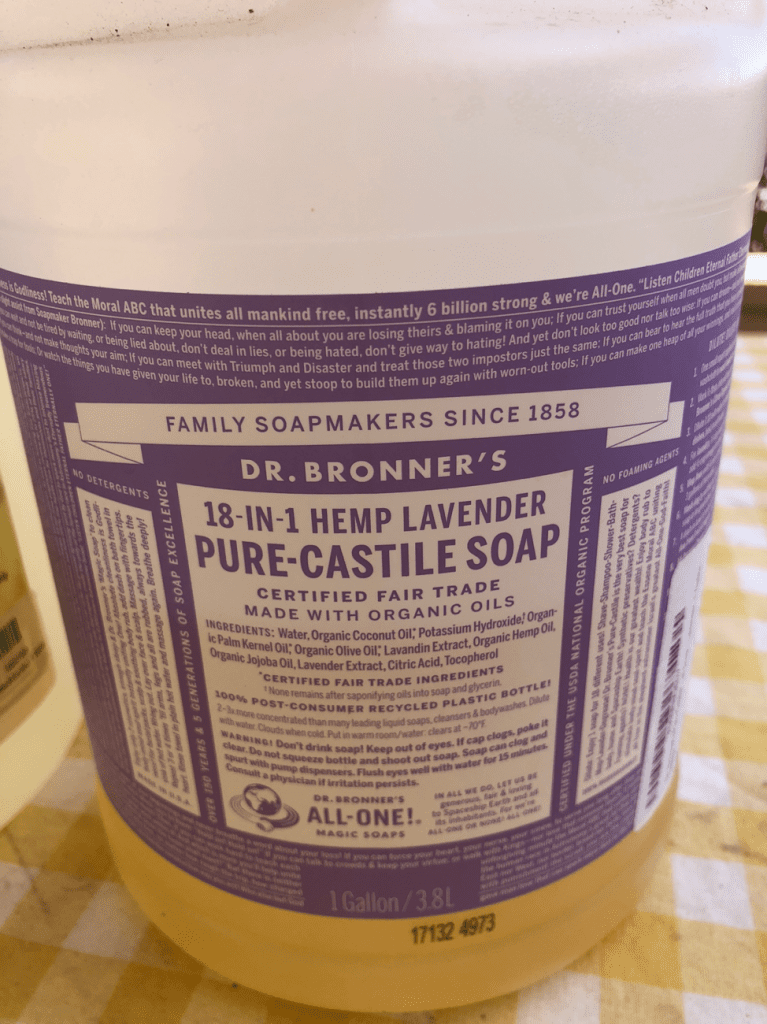
I buy Dr.Bronner’s soap in bulk in my own refillable container. This type of soap is biodegradable and, since we use a greywater system at home, it is the only soap safe for our garden.
This is what we use for all our zero waste cleaning and hygiene needs, as it also plays an important part in dishwashing, house cleaning, and, of course, everyday family bathing and hygiene.
Deodorant
It’s been almost 3 years since I stopped buying deodorant and started making my own zero-waste one. It is incredibly easy and works like a charm.
The best part is that I make it with ingredients I keep in the kitchen – coconut oil, baking soda, and arrowroot – so it also saves me a lot of money. The majority of store-bought deodorants contain chemicals like aluminum and parabens, which are harmful to your body, not to mention the environment. Plus, regular solid deodorants always come in plastic packaging.
Here is my video tutorial on how to make your own zero waste deodorant!
For me, a zero waste bathroom (or home for that matter) would not be complete without also saving water on a daily, minute-by-minute basis. I never said it was easy, but I do mean we should all stop wasting water or continue polluting it.
There is no place in a home – other than the drain – that we discard waste so easily and never think about it again. It might seem like a good place to get rid of unwanted liquid waste and be done with it, but the truth is that whatever goes down the drain will eventually end up in waterways and, sometimes, even back in our homes.
- Band-aids: Most are not biodegradable unless you buy compostable ones. Regular band-aids contain plastic and chemicals and should never be flushed down the toilet. A better option is compostable band-aids that you can just throw into a compost bin when done.
- Dental floss: Do not throw dental floss down the drain, even if it is biodegradable. Until it degrades, it may wrap around other things and cause a clog.
- Old medications: Every time I hear someone recommending that I flush medications, it scares me because it is very dangerous. Prescription pills contain lots of chemicals that destroy bacteria, contaminate our groundwater, infiltrate the soil, endanger wildlife, and cause huge damage to our ecosystem. Imagine what harm hormones and antibiotics will do to any living, breathing creature, no matter its size. Unused and old medications should instead be dropped off wherever there is a medication take-back program or taken to a recycling center. Talk to your local pharmacist and make sure you get all the answers you want to safely discard expired pills, solutions, creams, etc.
- Soap and laundry detergents: Most commercial soaps and laundry detergents contain an array of harmful chemicals. When they go down the drain, they cause harm to our ecosystem and pollute our waters. We only wash our bodies with organic or homemade soaps and clean our clothes with biodegradable detergents.
- Beauty products containing micro-plastics: Don’t buy cosmetics and beauty products which contain microplastics, as they end up in the ocean and our drinking water.
Other Ways to Save Water for a Zero Waste Bathroom

Here are other ways to achieve and maintain a zero waste bathroom focused on water conservation:
- Skip baths and take shorter showers
I for sure enjoy relaxing in a hot bath or, at the very least, a nice long shower. But no more! Shorter showers are the right way to go when saving water. For each minute in the shower, there are 5 gallons of water down the drain.
One good way to conserve water in the bathroom is to install a low flow showerhead. It costs just a few bucks, but it can save about 2 gallons of water per minute. Compared to a standard showerhead, a family of four can save approximately 20,000 gallons of water per year.
- Don’t let the water run while you brush your teeth, wash hands, etc.;
- Save toilet water following the philosophy that “if it’s yellow, let it mellow but if it’s brown, flush it down.” You consume over 1 gallon of water for each flush, so the philosophy above can save a lot of water and money.
- Use shower filters against hard water for a healthy lifestyle. They are an excellent choice especially if you or your family have dry skin or want the kids to enjoy healthy safe skin.
- Save water in the shower by bringing a bucket into the shower and collecting water while the shower is running waiting for warm water. You can then use that water in the garden or to wash the house stairs, etc.
- Run your washing machine and dishwasher only with a full load. Newer appliances are more water and energy-efficient, but it is better to be safe.
How do You Try Living in a Zero Waste Bathroom?
Nowadays, we have plenty of solutions to live greener lives, protect the environment, and build a safer, healthier world for our children. Did you ever try to turn things around and enjoy a zero waste bathroom? What other ideas, tips, and tricks (that work) can you share with us? How about your personal experiences with going green in your home?